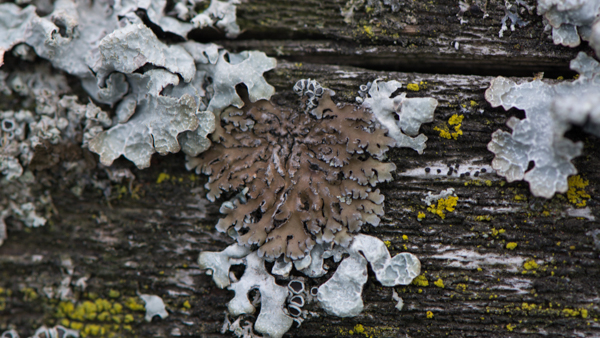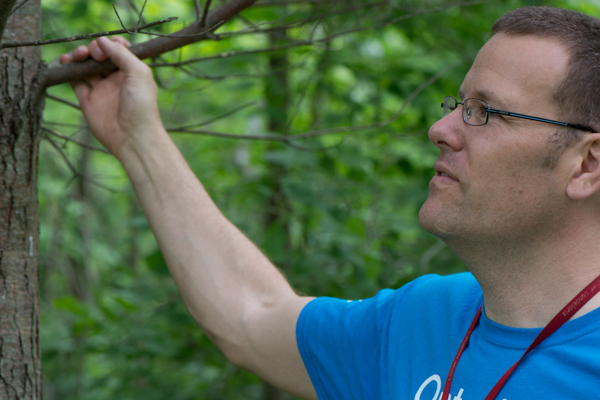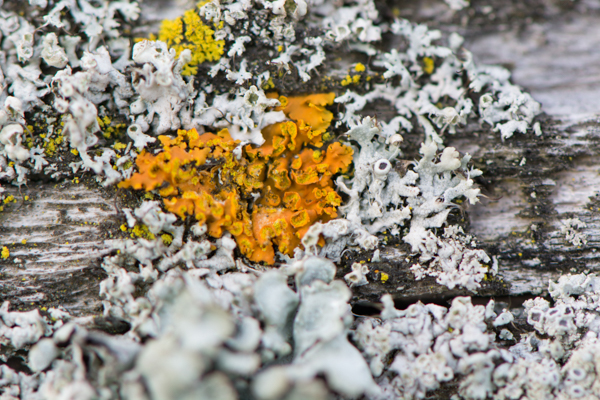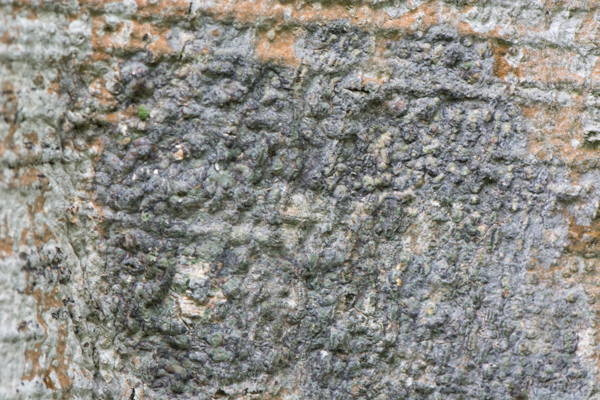BioBlitz Bits: Liking Lichen

Guest Blog written by 2015 Environmental Visual Communication student Austin Miller and Lichenologist Dr. Troy McMullin of the Biodiversity Institute of Ontario (BIO)
During the 2015 Ontario BioBlitz in the Don Watershed, I had the pleasure of spending a day with Dr. Troy McMullin, a lichenologist from the Biodiversity Institute of Ontario Herbarium at the University of Guelph. Troy co-authored the book "Common Lichens of Northeastern North America", a beginner’s guide to discovering the world of lichens. He is also the first to publish a scientific paper that analyzed data that had been collected during flagship events of the Ontario BioBlitz. So when I was offered the chance to accompany Troy on a lichen survey, I jumped at the offer!

Lichens are fascinating organisms, composed of algae and fungi. The algae provides energy by photosynthesizing and the fungi provides a home and nutrients. These nutrients are obtained directly from the air and any precipitation that washes over them, allowing lichens to be excellent bioindicators of air quality.
It is no surprise that, like many large urban areas, Toronto’s lichen population is not as diverse as it is in more remote locations that have less air pollution and disturbance. But Troy and his colleagues have discovered that urban parks, protected areas, like the Humber Watershed and other GTA river systems and conservation areas have a higher species diversity and can act as a refuge for lichen that aren't found anywhere else in the city. What makes these areas special, despite the continued presence of some air pollution and disturbances, is that they provide a diversity of habitats and substrates (the rocks, trees, and other surfaces that the lichen attach themselves to) that can allow for more varied lichen species to survive. Some species are also just more tolerant than others, and can hold out against the pressures of an urban environment longer than their more sensitive relatives.
At Baker’s Woods, Troy found a species of lichen that typically lives in coastal areas on both sides of North America. It is commonly known as the Maritime Sunburst Lichen, Xanthoria parietina, because of its bright yellow-orange colour. This species is now adapting to and thriving in this urban woodlot situated just north of Toronto in the Don River Watershed. It has also recently been found in other areas of Southern Ontario. It is unknown yet why this species is now occurs in the province, but it could be a sign that the environment and its species in this region is slowly changing.

Our next stop during the BioBlitz was an old cedar swamp with stunning beech trees that towered above us. It is here that Troy found something he really did not expect – a species from a tropical genus, Trypethelium virens. This species occurs farther north than any other species of Trypethelium, and is known to reach its northern limit in Southern Ontario.However, it is rarely collected in the province, and Troy was surprised to find it in the City of Toronto. This is a perfect example of the buffering capabilities of old swamps, as well as the ability of urban parks to support richer biodiversity in our cities.

When the surveys were done Troy brought the specimens he collected back to his lab for identification. Lichens can be difficult to identify because many of their distinguishing features are not visible with the naked eye. Troy must use a microscope to dissect their fruiting bodies and locate their spores to determine species accurately.
Surveying with Troy was a great learning opportunity for me. Spending a day with an expert in the field and experiencing the scientific process first-hand makes events like the Ontario BioBlitz truly memorable, and provides everyone with a chance to explore the biodiversity that is waiting for us to find it right in our own backyard.
